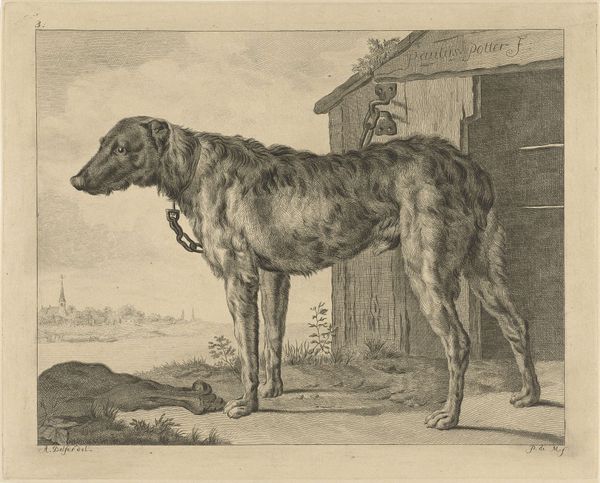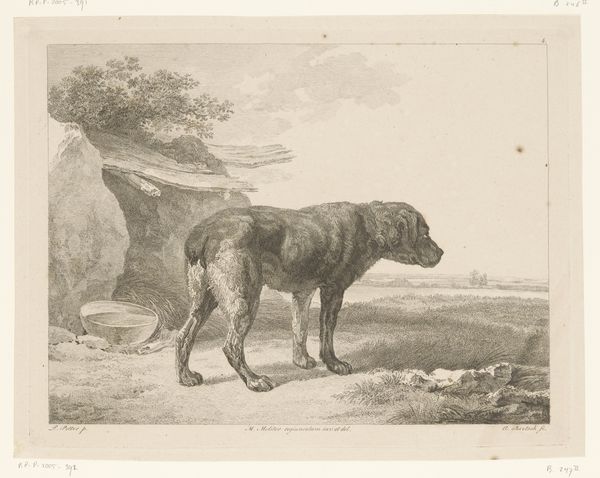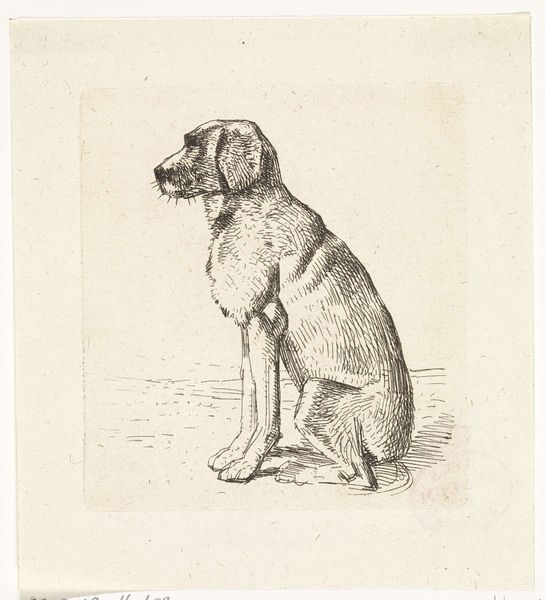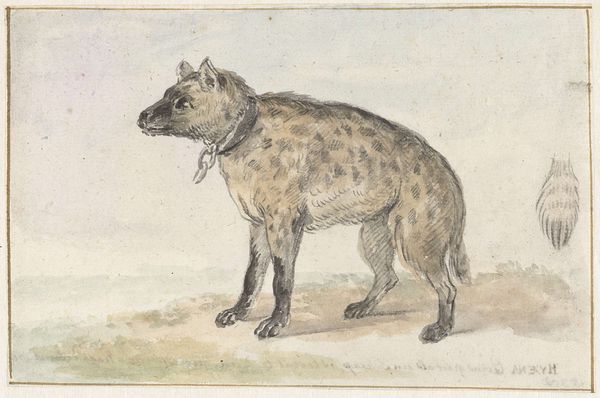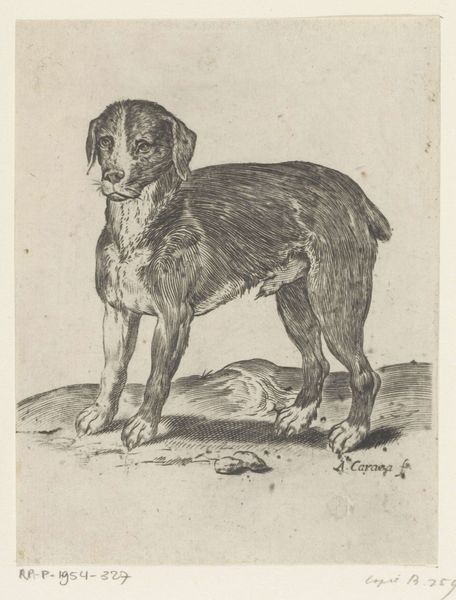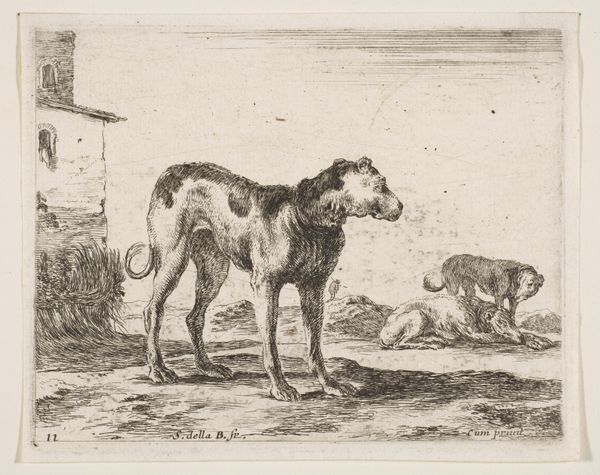
print, engraving
#
portrait
#
animal
# print
#
dog
#
landscape
#
engraving
#
realism
Dimensions: height 270 mm, width 334 mm
Copyright: Rijks Museum: Open Domain
Editor: This print, “Hond,” depicts a dog. It's an engraving dating from around 1768-1796, and the Rijksmuseum credits it to Pieter de Mare. The realism is quite striking. What strikes you when you look at it? Curator: I'm drawn to the process itself. The sharp lines of the engraving suggest a deliberate, perhaps laborious, process of production. Think about the artisan carefully etching the image onto the plate. We often divorce the art from the labor required to produce it. Editor: So, you see the focus not so much on the dog, but more the act of *making* the image? Curator: Precisely. Consider the societal context too. Prints made art more accessible, and this act of making such work becomes incredibly relevant. It democratized art in a way – moved it from solely aristocratic to common consumption, like how things are produced today. Editor: That’s interesting, looking at it as a democratizing force, I hadn't considered that. And how it shifted labour models, too. Do you think the dog, as the subject, says anything about that shift in art production? Curator: In terms of class maybe. Owning animals as domestic symbols moved down the social ladder at this time. Editor: Right, like portraying aspects of a domestic environment to a new class of consumer. So the act of printing enabled wider reach, a changing labor structure, and new ways to frame class? Thanks, I’m going to look at engravings differently from now on! Curator: And I think I will consider the way animal symbolism affected emerging labor practices and their consumers.
Comments
No comments
Be the first to comment and join the conversation on the ultimate creative platform.
